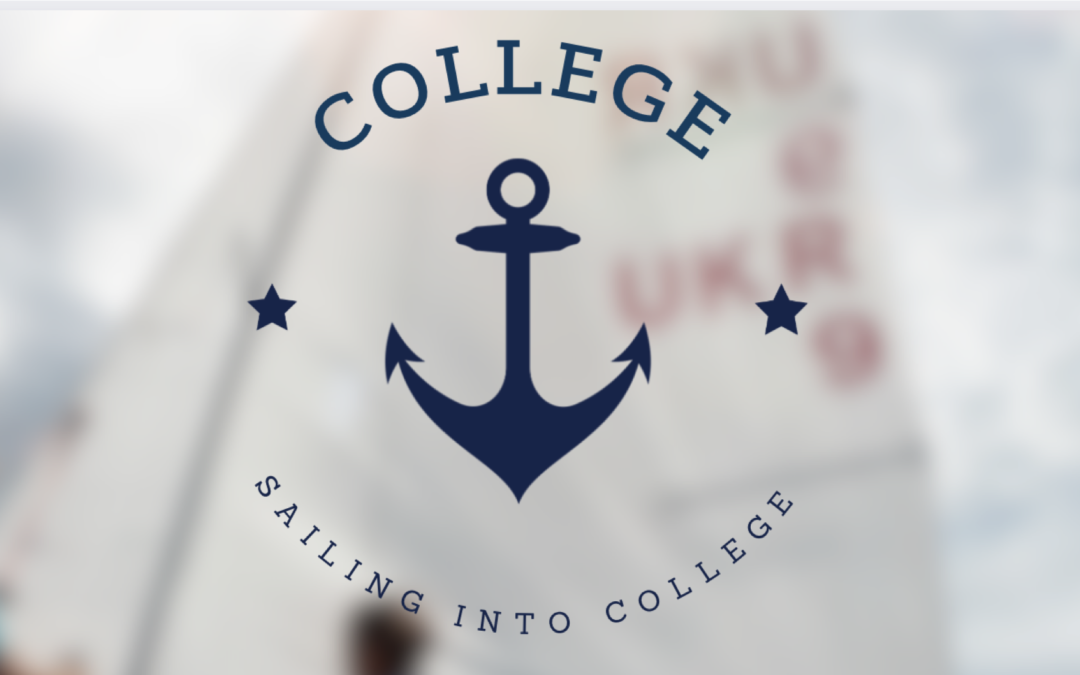
Sailing Into College
Are you ready to hoist the sail?
One of the often-asked questions college counselors will field is about students participating in athletics in college. As we are Annapolis College Consultants, more often than not, the sport in question is sailing. There is a robust body of literature about sports in college, and learning the basics of athletic admissions is a Google search away. This article will touch on some of the processes of sailing recruitment, give some numbers and context of collegiate sailing programs and finish exploring some of the fun and offbeat options folks may not realize exist.
According to the governing body of intercollegiate sailing, the Inter-Collegiate Sailing Association (ICSA), there are 35 colleges with teams that have varsity status, meaning they are fully funded by the institution. There are a further 163 club teams and it is not unusual for club teams to race varsity teams and vice-versa. Schools with varsity teams will recruit their athletes in a similar manner to other athletic teams on campus. For most athletes looking for a spot on a non-revenue team, typically one of the first things they will do is complete and submit a student-athlete questionnaire commonly found on team or athletics department websites.
you are looking to get on the radar screen of a particular team, especially if you don’t know any of the coaches, this is a good first step insofar as you will be asked about your current school, courses and grades and a brief sailing resume including any significant results. This will be more effective than an unsolicited email to a coach as it will give the reader a brief snapshot of you and the staff will be able to better gauge your level of sailing and suitability for the team. While most club teams will not have the clout of a varsity team in terms of admissions, they too will welcome contact and if you are considering a school with a club team, do reach out and try to set up a meeting with the current coach and/or sailors if you are planning on a school visit. If it is a school you are seriously considering, make sure the team (and everything else) passes the ‘vibe test’.
Some common questions about varsity teams include admissions help and scholarships. In terms of help in admissions, for a majority of schools and a majority of teams, if admissions support is offered, think of this more like a small step up rather than an extension ladder. Yes, schools can provide a small bump, but especially at more selective schools, they will be looking for athletes who are also academically qualified. It doesn’t do a team any good to offer a student-athlete as spot only to have them struggle academically (and likely quit the team). In addition, if a school will support you through admissions, it is likely that you will be asked to apply Early Decision, which is binding. If it’s a good fit (with admissibility, affordability and appropriate programs of study), move ahead with confidence.
In terms of scholarships, on a typical sailing team, there may be limited scholarships available, but in those cases, the coaches will typically offer fractions of tuition (meaning the scholarship may cover 1/4-1/2 of tuition) and many of the sailors on the team will receive no financial assistance. Scholarships in sailing are rare. It doesn’t hurt to ask, but virtually no sailors will have all of their costs covered by a sailing scholarship.
So what else is there? In my work, I have also come across a number of options for sailors that, in some cases, bring sailing into the classroom. The first easy examples are the Maritime Academies. There are six Maritime Academies in the US and all offer degrees in Maritime Transportation and Marine Engineering and Students there will earn the required Coast Guard certifications to go straight to work onboard ships right after graduation. In addition to big-boat transportation and engineering, these schools have a number of other programs including international logistics, small boat (less than 200 tons) sailing programs along with marine sciences. Take a look.
For those who like to draw boats in the margins of your notebooks, why not look into Naval Architecture? Boat design is a fascinating and multidimensional field taking into account multiple systems, materials, and means of propulsions, all of which must coexist and function in a very challenging environment. Several of the Maritime Academies have Naval Architecture and one of the real hidden gems of the college world is the Webb Institute (NY). Students accepted there pay no tuition (but they do pay for room and board). This is a very, very small school that offers one program, Naval Architecture. Competition for the available spots is fierce but for the right student, it is a fantastic experience.
Finally, for the nescient engineers out there, a handful of schools have teams that compete in the International Robotic Sailing Regatta (SailBot). These are teams that design and build autonomous sailboats that compete against one another. Mind you, these are not remote-control boats, but rather sailboats with numerous onboard sensors and processors that sail themselves. Talk about engineering!
For those looking to sail in college, there are many opportunities available ranging from racing to training for employment on big boats to education in naval architecture, marine engineering, ocean science and studies and even robotic sailboats. In all cases, the more research you do, the more you will discover.

